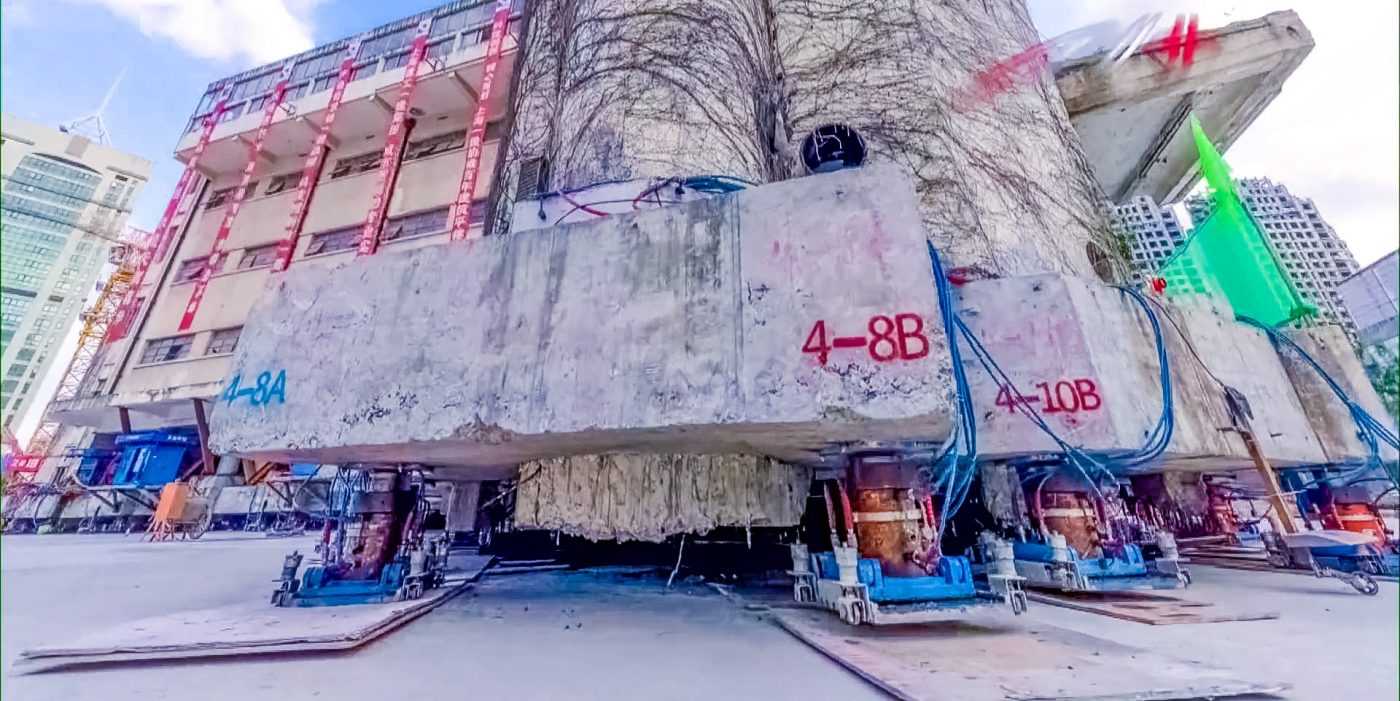
Walking buildings
When Shanghai's Lagena Primary School, a historic structure built in in 1935, needed to be moved for the construction of a new office building, the building's irregular shape and the need to move it along a curve posed big challenges. Evoking the massive land robots of Archigram's 1966 "Walking City" local startup Evolution Shift developed an ingenious "walking machine" whose 198 leg-like, sensor-controlled mobile supports rotated the 7,600-ton school 21 degrees and moved it 62 meters (203 feet) over the course of 18 days to its new location, where it will become a cultural center.
This technology suggests that as China continues to place greater value on historic buildings, it will utilize technologies like these to more widely and cost-effectively relocate and preserve structures that would otherwise face the wrecking ball during waves of rapid urban expansion—and in the long-run it suggests that buildings themselves may one day become mobile, able to move away from natural or man-made hazards, or simply in response to market shifts.




..png)
